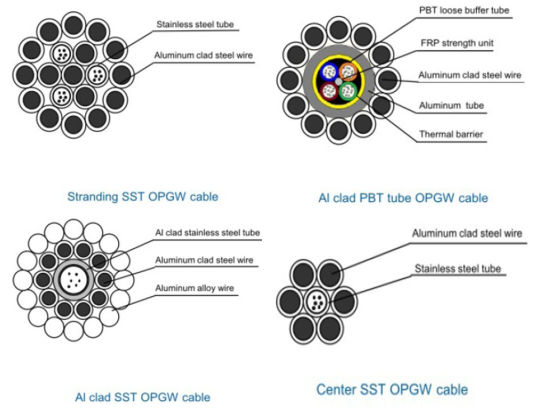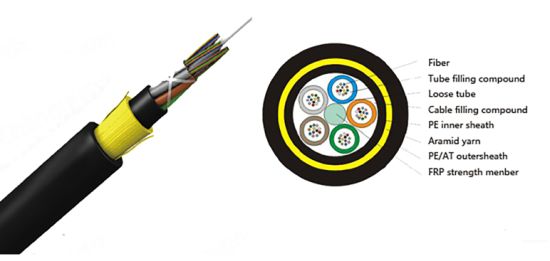The technical parameters of OPGW and ADSS cables have corresponding electrical specifications. The mechanical parameters of OPGW cable and ADSS cable are similar, but the electrical performance is different.
1. Rated tensile strength-RTS
Also known as ultimate tensile strength or breaking strength, it refers to the calculated value of the sum of the strength of the load-bearing section (ADSS mainly calculates the spinning fiber). In the breaking force test, any part of the cable is judged to be broken. RTS is an important parameter for the configuration of fittings (especially the tension clamp) and the calculation of the safety factor.
2. Maximum allowable tensile strength-MAT
This parameter corresponds to the maximum tension of OPGW or ADSS when the total load is calculated theoretically under design weather conditions. Under this tension, it should be ensured that the fiber is strain-free and has no additional attenuation. Usually MAT is about 40% of RTS.
MAT is an important basis for calculation and control of sag, tension, span and safety factor.
3. Daily average running tension-EDS
Also known as the annual average operating tension, it is the average tension experienced by OPGW and ADSS during long-term operation. It corresponds to the theoretical calculation of the tension under the conditions of no wind, ice and annual average temperature. EDS is generally 16% to 25% of RTS.
Under this tension, OPGW and ADSS cable should withstand the wind-induced vibration test, the optical fiber in the cable should be very stable, and the materials and fittings used should be free from damage.
4. Strain limit
Sometimes called special operating tension, it should generally be greater than 60% of RTS. Usually after the force of the ADSS optical cable exceeds the MAT, the optical fiber begins to strain and additional loss occurs, while the OPGW can still keep the optical fiber strain-free and no additional loss until the strain limit value (depending on the structure). But whether it is OPGW or ADSS optical cable, it is required that the optical fiber should be guaranteed to return to the initial state after the tension is released.
5. DC resistance
Refers to the calculated value of parallel resistance of all conductive elements in the OPGW at 20°C, which should be as close as possible to the opposite ground wire in a dual ground wire system. ADSS has no such parameters and requirements.
6. Short circuit current
Refers to the maximum current that the OPGW can withstand within a certain (generally, single phase to ground) short-circuit time. In the calculation, the values of the short-circuit current time and the initial and final temperature have an impact on the results, and the values should be as close as possible to the actual operating conditions. ADSS has no such number and requirements.
7. Short-circuit current capacity
It refers to the product of the square of the short-circuit current and time, that is, I²t. ADSS has no such parameters and requirements.



